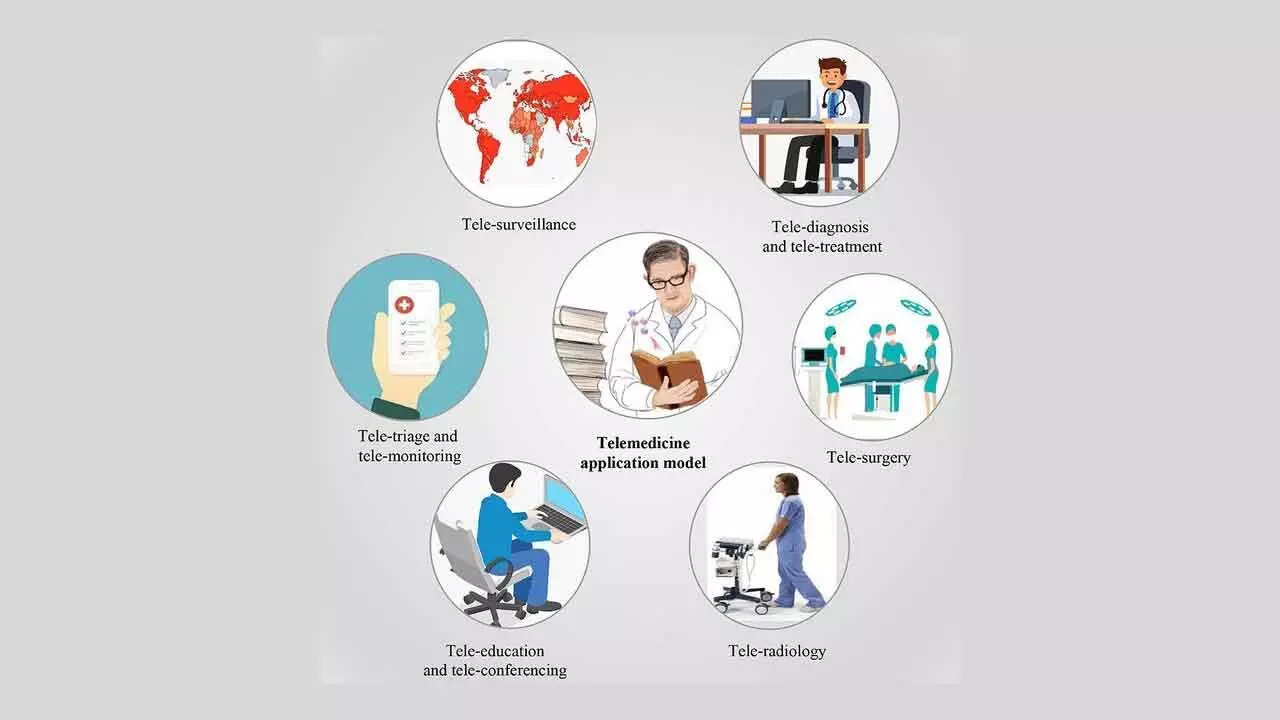It was the Covid-19 pandemic that made telemedicine an integral part of modern healthcare. One likely factor that will bring real-world telemedicine closer to science fiction dreams will be developments in human spaceflight.
In 1874, a surgeon in South Australia transmitted wound care instructions to a patient 2,000 kilometers away. A few years later, in 1879, a letter in the medical journal The Lancet suggested that doctors use the telephone to avoid unnecessary patient visits.
With the proliferation of the telephone and telegraph, the idea of telemedicine – literally “healing at a distance” – inspired science fiction writers to imagine new ways of treating patients over great distances. Since then, technology in the real world has developed in parallel with the science fiction speculations. Today, certain types of telemedicine have become commonplace, while other futuristic tools are in the making.
The Radio Doctor and Teledactyl:
In his 1909 short story “The Machine Stands Still,” English writer EM Forster described a telemedicine device that descended from the ceiling in response to a telegraph signal to provide care to patients in the comfort of their own homes. His story is also the first description of instant messaging and a form of the Internet – both important elements of real-life telemedicine.
In 1924, Radio News magazine printed a cover story featuring the future “Radio Doctor.” The cover shows a doctor examining a patient through a screen. Although the magazine story itself was a bizarre work of fiction that had little to do with a Radio Doctor, the images are striking.
In a 1925 cover story in Science and Invention, American author Hugo Gernsback describes a device called the “Teledactyl” (from “tele” for “far” and “dactyl” for “finger”). The device uses radio transmitters and television screens to allow a doctor to communicate with a patient. The trick is that the doctor touches the patient using a remote-controlled mechanical hand that is placed in the patient’s home.
Gernsback was a futurist and pioneer of radio and electrical engineering. Nicknamed the “Father of Science Fiction,” Gernsback used fictional stories to educate readers about science and technology, often delving into extensive scientific detail in his writings. He helped establish science fiction as a literary genre, and the annual Hugo Awards are named after him.
From sailors to astronauts:
Radio was important to early telemedicine. In the 1920s, doctors around the world began using radio to examine, diagnose, treat, and provide medical advice to sick or injured sailors and passengers. Radio is still used to provide medical advice to ships at sea.
In 1955, Gernsback returned to the idea of remote medicine with “The Teledoctor.”
This imaginary device uses the telephone and a video surveillance circuit with mechanical arms controlled by the doctor to provide care to patients remotely. Gernsback said the doctor of the future will be able to “do almost everything through telemedicine that he can do in person.”
In 1959, psychiatrists in Nebraska began using bidirectional surveillance cameras to conduct psychiatric consultations between two locations, considered one of the first examples of modern telemedicine. Earlier telemedicine networks were expensive to develop and maintain, limiting wider use.
In the 1960s, NASA began incorporating telemedicine into every manned space program. By 1971, a telemedicine system was ready for testing on Earth as part of the Space Technology Applied to Rural Papago Advanced Healthcare (STARPAHC) program. Using a two-way television and radio link and remote telemetry, the program connected the Tohono O’odham (then called Papago) people with nurses and doctors hundreds of miles away.
The Internet and a pandemic:
It was not until 1970 that the term telemedicine was officially coined by the American doctor Thomas Bird. He and his colleagues set up an audio-visual connection between Massachusetts General Hospital and Logan Airport to enable airport employees to receive medical advice. From the 1970s onwards, telemedicine became increasingly important.
The Internet, officially born in 1983, brought new ways to connect patients and doctors. Satellites could connect doctors and patients over longer distances without the need for two-way surveillance cameras. The cost of developing and maintaining a telemedicine network dropped in the 1980s, opening the door to wider use.
In his 1999 science fiction novel Starfish, Canadian author Peter Watts describes a device called the Medical Mantis. This device allows a doctor to remotely examine and treat patients deep beneath the ocean’s surface. In the early 2000s, NASA’s Extreme Environment Mission Operations began testing remotely operated surgical robots in underwater environments. The development of telemedicine has kept pace with advances in information and communications technology. Nevertheless, telemedicine was rarely used in the 1990s and early 2000s.
It was the Covid-19 pandemic that made telemedicine an integral part of modern healthcare. Most of these consultations are done via video call – not far from what Gernsback envisioned a century ago, but so far without robotic hands.
What happens next?
One factor that will likely make real-world telemedicine match the dreams of science fiction is developments in human spaceflight. As humanity makes progress in space exploration, the future of telemedicine may look more like science fiction. Monitoring the health of astronauts on Earth will require technological breakthroughs to keep up with them as they venture deeper into space.
(The author is associated with the University of Melbourne)

